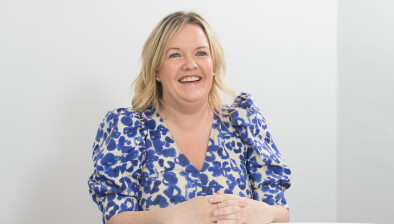Michael Jamieson: Family business under threat from IHT changes

Michael Jamieson
Michael Jamieson discusses the financial challenges that recent changes to the UK’s inheritance tax rules present to family-run businesses in Scotland and outlines various strategies to help mitigate their impact.
In last year’s Autumn Budget, the Chancellor announced a number of significant changes to the UK’s inheritance tax (IHT) regime including an increase in capital gains tax (CGT) rates and a cut in the level of business property relief (BPR).
The lower rate on CGT for business owners selling their company has been a key incentive to encourage entrepreneurism but from next April it’s set to increase from 14% to 18% on the first £1 million of gains per qualifying shareholder. Gains in excess of £1m will be subject to CGT at the top rate of 24% (albeit this rate may change in future years).
Meanwhile, the 100% relief rate on BPR, which had previously been uncapped, will be significantly reduced from April 2026, applying only to the first £1m of combined agricultural and business property assets. Any assets above that level will be subject to IHT at a rate of 20% in the event of a business owner’s death or when their company’s ownership is passed on to another party other than their spouse.
While these measures are intended to bolster much-needed Treasury revenue, they also present a real challenge to family and rural businesses in Scotland which make up the backbone of the Scottish economy.
According to Family Business UK, there are more than 280,000 family businesses in Scotland, accounting for 84% of the all the nation’s businesses and employing 874,000 people. This broadly reflects Scottish Government figures from 2024 reporting 75% of SME employers in Scotland were family majority-owned, with 37% of them based in rural locations.
The changes to IHT have left many family business owners facing uncertainty about their future direction and could ultimately deter some entrepreneurs from operating within the UK.
In terms of mitigating the financial impact of CGT changes, if the objective is to reinvest some of the proceeds of a company sale into a new business, it may be possible to restructure ownership prior to a future sale. There is also the option of business owners changing their UK residency status prior to a company sale, although this involves becoming a non-resident for, at least, five years.
In reducing the impact of the new BPR measures, family businesses could consider accelerating their succession plans. This could be achieved through the simple gifting of shares to family members or via a more complex family-focused Management Buy Out.
In light of the forthcoming IHT changes, it’s important that family businesses review their ownership structure and align these with their own objectives, goals and dynamics. Where possible, splitting ownership across the family can maximise the £1m BPR allowance. Doing this can achieve BPR protection after a two-year holding period on up to £1m of value per person and 20% on the excess value. This can be particularly useful for large families where equity ownership can be shared across multiple family members.
The updating of wills is another important IHT mitigation consideration. The £1m BPR allowance is not transferable between spouses so existing mirror wills, where all assets pass to the surviving spouse on first death and then down a generation, should be reviewed. Updating such wills so that at least £1m of BPR qualifying value is transferred down a generation or to a trust on first death should be an effective means of securing the BPR allowance within a family business.
Taking out a life insurance policy is another potential albeit costly way for family business owners to protect their IHT positions. This can cover shorter period of up to 10 years or for the whole of the individual’s life. While it may not necessarily need to cover the full IHT liability, it can be a way of protecting the next generation from the full impact of the new measures.
There are also longer-term financing options for family businesses to consider where the IHT liability can be paid over a 10-year period on an interest free basis. This requires specialist advice where careful cashflow management and continued profitability are key.
With Rachel Reeves due to deliver her next Budget on 26 November, there has also been speculation about other potential changes to IHT which she may (or may not) introduce in her efforts to bolster Treasury resources.
As we watch with interest what further measures may be announced in the forthcoming Autumn Statement, it is vital that family businesses take stock of their IHT position and take proactive action to mitigate the impact of next April’s changes to CGT and BPR.
This is essential in helping Scotland’s estimated 280,000 family-run businesses to thrive and safeguarding what is the backbone of our nation’s economy.

Michael Jamieson is a director and personal tax expert at accountants CT







